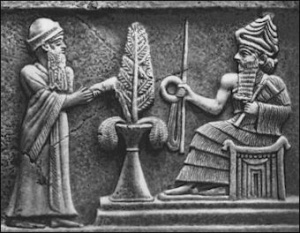Template:Sumer

The model of these proto-states are seen in modern governments where power is increased or centralized by the people becoming dependent upon the state and its forms of civil religion which compelled contributions of its registered members with the promise of entitlements providing some form of free bread or social welfare or what has been called the dainties of these rulers.
The alternative was a network of fervent charity which was promoted by Moses and the Christ which sets the captive free rather than the Legal charity of the state which degenerates the masses while empowering rulers and tyrants.
Augustus Caesar instituted a similar system of free bread in Rome through its government temples which led to its decline and fall.
In more modern times FDR set up his New Deal and LBJ his Great Society which is presently leading to the same degeneration of the people and a corresponding decline of social bonds and fall of "Pure Religion" and loss of liberty.
Sumer and the proto-state
Sumer is one of the earliest known civilization in the historical region of southern Mesopotamia, emerging during the Chalcolithic and early Bronze Ages between the sixth and fifth millennium BC.
Biblically speaking Cain established the first city-state. A city-state, or polis, was the community structure of ancient Greece.
A city-state was often organized with an urban center in a fertile area. There might be outer walls for protection, as well as a public space that might eventually have included temples for the purposes of public welfare and government meeting places for deciding what might be important including the administration of justice and preparation for mutual defense.
One of the earliest sites of an ancient city-state is called Çatalhöyük or Catal Huyuk in southern Anatolia, which appears to be founded around 7,400 BC. Catal Huyuk was not only streetless but had entrances through the roof and covered more than 30 acres. Very little is known about the people who lived there, and it was suddenly abandoned, around 5,950 B.C., possibly because of diseases, overcrowding, and change in climate. Some believe the life span was only 3 decades.
Piecing the pieces of these ancient puzzles together can sometimes be difficult because we are still interpreting our discoveries based on limited information and our perspective or current point of view. The continued excavation of places like Sumer has revealed many tablets of written information which can give us some greater insight into the city-state administration and the how and why people lived in them.